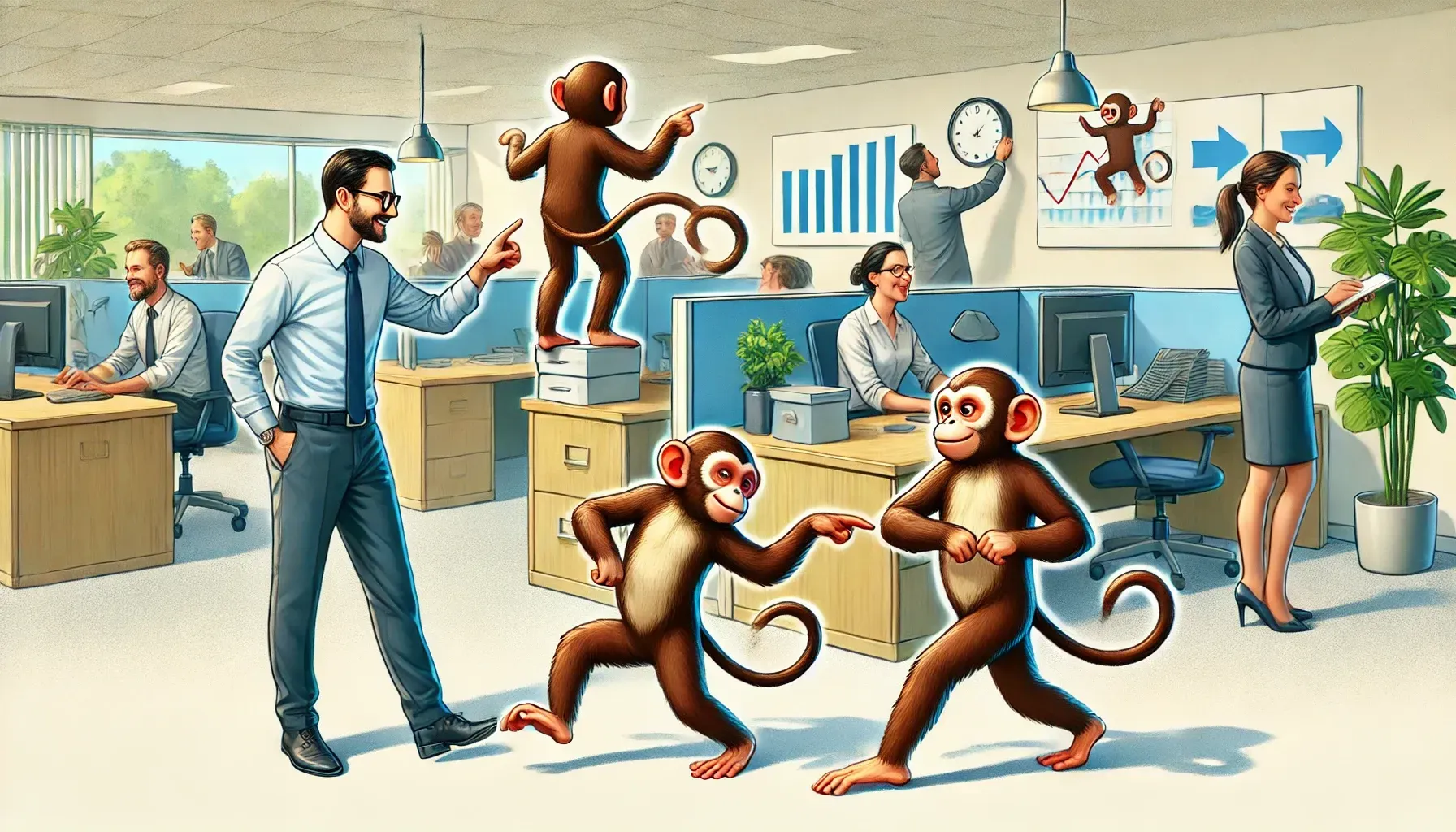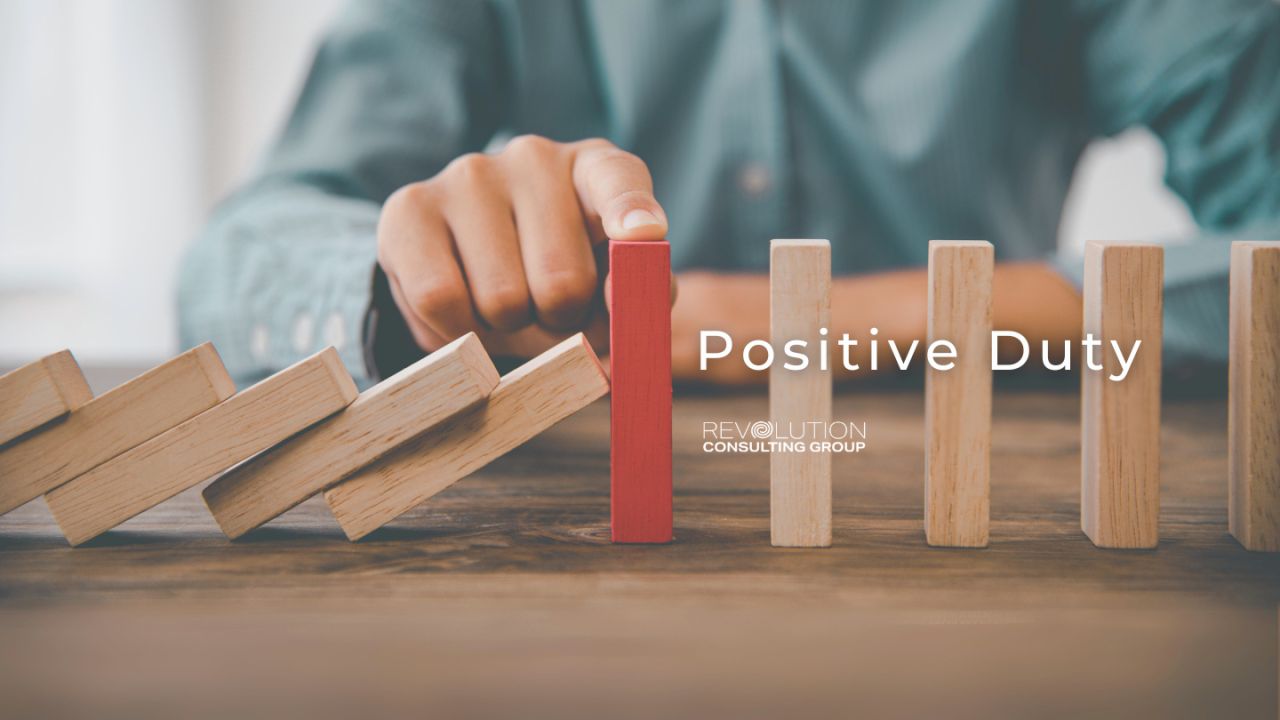Leadership

By Sally Dillon
•
February 26, 2025
Can ChatGPT Replace HR? The Risks of AI-Generated HR Advice
AI tools like ChatGPT are revolutionizing the workplace, but can they handle complex HR decisions, employee issues, or legal compliance? The short answer—not safely.
Businesses that rely on AI for terminations, pay rates, workplace investigations, or employment contracts risk costly legal mistakes, financial penalties, and reputational damage. HR isn’t just about policies—it’s about human behavior, legal nuance, and ethical decision-making—things AI simply doesn’t understand.
In this article, we explore real-world examples of AI-generated HR blunders and the hidden risks of trusting ChatGPT for critical people management decisions. Plus, we share insights on where AI can help—and where it absolutely shouldn’t.
Read on to protect your business from HR disasters.

By Sally Dillon
•
July 4, 2024
Is The Monkey Still Relevant? In the world of modern management, the concept of "Management Time: Who’s Got the Monkey?" by William Oncken Jr. and Donald L. Wass still resonates deeply. Originally published in 1974 and revisited multiple times, this seminal article sheds light on a perennial issue: managers overwhelmed by tasks while subordinates seem to have ample time and energy. Understanding Management Time Today Managers today face a quartet of time demands: Boss-imposed time: Tasks directly mandated by superiors, non-negotiable and swiftly penalised if neglected. System-imposed time: Requests from peers for support, vital for organisational harmony and efficiency. Self-imposed time: Initiatives and tasks originating from the manager themselves, including tasks delegated by subordinates. Team member-imposed time: Requests, questions, or tasks initiated by team members that require the manager's attention or input. The challenge lies in balancing these demands to maximise discretionary time—time not governed by external pressures and crucial for strategic decision-making. The Monkey Metaphor in Today’s Workplace Imagine a manager walking down the hallway, stopped by a subordinate with an urgent issue. Initially, the problem is the subordinate's ("the monkey is on their back"). However, as the manager engages without immediately resolving, the monkey leaps to the manager's back. This shift represents how subordinates can inadvertently burden managers with their tasks and decisions. Practical Leadership Takeaways Empowerment through Initiative: Managers should foster a culture where subordinates take initiative and responsibility. This not only lightens the manager’s load but also enhances team autonomy and morale. Clear Communication: Setting clear boundaries and expectations prevents monkeys from leaping onto the manager's back. Discussions should clarify who owns the next steps and when they should be completed. Time Management: Effective time management is not just about personal efficiency but about strategically using discretionary time to focus on high-impact tasks and strategic priorities. Implementing Modern Strategies Today's managers must proactively manage their time and responsibilities: Appointment-Based Support: Engage with subordinates by appointment rather than ad-hoc interruptions to manage tasks effectively. Documentation and Follow-Up: Use technology and structured communication tools to document tasks and progress, ensuring clarity and accountability without burdening the manager. Training and Empowerment: Invest in training programs that empower subordinates to handle tasks independently and make informed decisions. Conclusion The timeless lesson from "Management Time: Who’s Got the Monkey?" remains clear: managers must reclaim control over their time by preventing subordinate tasks from becoming their own. By fostering initiative, setting clear boundaries, and leveraging technology, modern leaders can achieve greater efficiency and effectiveness in their roles. This approach not only reduces stress but also enhances organisational productivity and employee satisfaction—a win-win for managers navigating today’s complex business environments. You can read the original HBR Article here. Further Enhance Your Leadership Skills If you find yourself grappling with the challenges of balancing managerial responsibilities and empowering your team effectively, consider exploring our Leadership Dynamics Program at Revolution Consulting Group. Designed to equip leaders with modern strategies and practical tools, our program focuses on fostering a culture of accountability, enhancing team dynamics, and maximising leadership potential. Whether you're looking to refine your leadership approach or empower your team to take on greater responsibilities, our tailored coaching and training solutions can support your journey towards becoming a more effective and influential leader. Click here to book an free Triage Call to find out about how our 12 week Leadership Dynamics Program can benefit you. Click here to join our mailing list to get more tips, advice and updates on all things HR and Leadership.
Categories

Coach Sally
Sally, has 20 years of human resources and leadership development/coaching experience in specialist business partnering roles and leadership and executive roles. She has a wide-ranging skillset of leadership coaching, training, team and operational management, and career development support.







